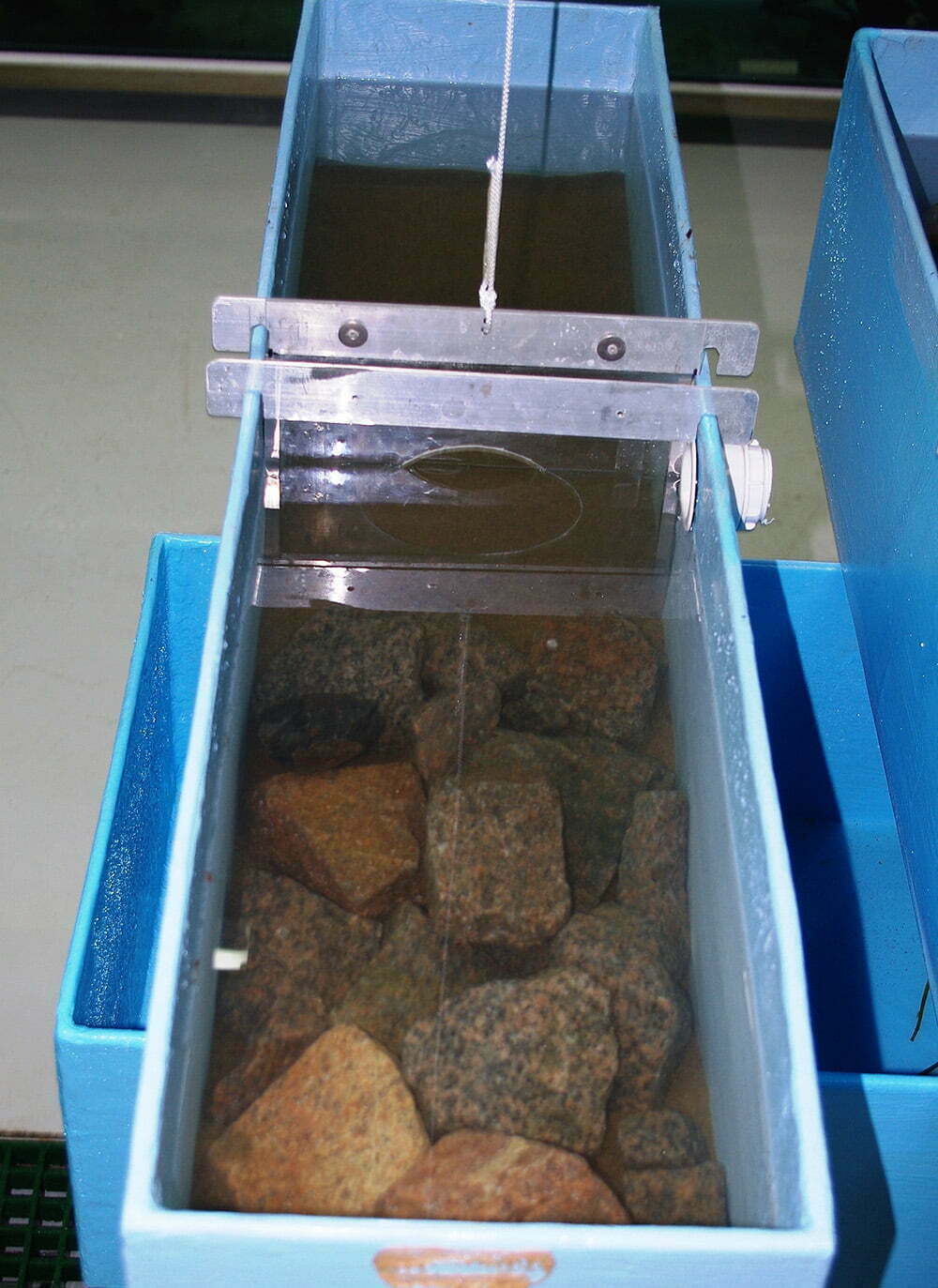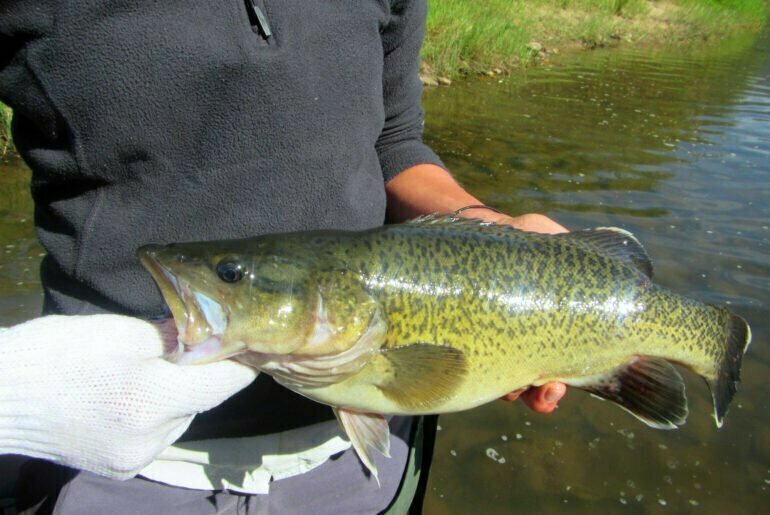Recent research into where our native fish like to call home has given us a better understanding of habitat preferences that could help guide future instream habitat restoration actions.
The habitat choices of seven native fish species were tested in preference troughs to investigate potential habitat restoration actions in the Condamine catchment.
- Juvenile Murray Cod (Maccullochella peelii),
- Juvenile Golden Perch (Macquaria ambigua ambigua)
- Juvenile Silver Perch (Bidyanus bidyanus)
- Adult Murray–Darling Rainbowfish (Melanotaenia fluviatilis)
- Adult Olive Perchlet (Ambassis agassizii)
- Adult Un‐specked Hardyhead (Craterocephalus stercusmuscarum fulvus)
- Adult carp gudgeons (Hypseleotris spp.)
Each species was given a choice between pair combinations of open sandy habitat, submerged macrophytes (water plants), emergent plants (half in and half out of the water) and rocky rubble.

You will note we used eight troughs (replicates) to test each habitat pairing. Twelve fish of a test species were in each trough. Fish were free to swim between the habitats for a couple of hours. We had dividers that could be lowered simultaneously remotely. After dropping the dividers we counted the number of fish on each side of the divider (representing the different habitat choices). We then calculated means and errors for that habitat pairing selection by the fish. We used a T –test to determine if the choice was significantly different from 50% use of each habitat (i.e. no preference). Quite simple really. Most striking was how much juvenile Murray cod preferred rock over other cover choices.
Habitat preferences varied between species. Murray cod, Golden perch, Carp gudgeons and Olive perchlets preferred structure over open sandy habitat, whilst juvenile Silver perch, Un‐specked Hardyhead and Murray–Darling Rainbowfish did not avoid open sandy habitats.
Juvenile Murray cod preferred rocky rubble habitat over all other habitat choices and this finding means that the use of complex rock piles to provide nursery habitat for Murray Cod populations is a potential restoration option. Introduction of rock could also benefit Golden perch and carp gudgeons.



Use of emergent plants, submerged macrophytes and rocky rubble for habitat restoration all appear to of value for one or more species of small‐bodied fishes or juvenile stages of larger sized fishes. Rocky rubble with floating attached macrophytes could also be viable restoration options in areas too turbid to establish submerged macrophytes.
The knowledge gained through this project can complement existing actions such as re‐snagging and provision of fish passage to assist with sustainable management of native fish populations.
Full report here:
Hutchison, M, Norris, A. and Nixon, D. 2019. Habitat preferences and habitat restoration options for small‐bodied and juvenile fish species in the northern Murray–Darling Basin. Journal of Ecological Management and Restoration.



